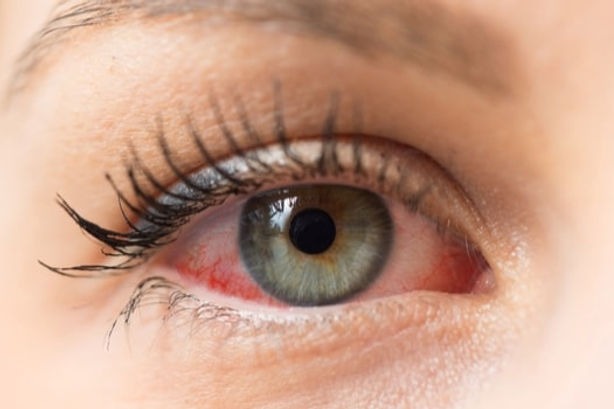
Dry eye disease is a condition that is quickly becoming an epidemic. Twenty percent of Americans have dry eye disease and it’s expected to grow to almost forty percent within 10 years. There are many causes of dry eye. It affects those who wear contact lenses and eye makeup and patients who may take antihistamines for allergies and/or systemic diseases such as cardiovascular disease, lupus, arthritis, or rosacea. Many dry eye patients are affected by their daily activities, such as smartphones, computer use, reading, or even outdoor activities like hiking.
Causes of Dry Eye Disease
Dry eye disease is inadequate moisture on the surface of the eye. This can be the result of many factors, such as:
BLEPHARITIS — Simply put, blepharitis is inflammation of the eyelid margin, resulting from an overgrowth of bacteria. This leads to chronic inflammation and an unstable tear film. Click here to learn more about blepharitis.
AQUEOUS DEFICIENT — When the lacrimal gland fails to produce enough tears, the ocular surface becomes dry and lacks the components needed to provide comfort and clear vision.
MEIBOMIAN GLAND DYSFUNCTION — Meibomian glands line the upper and lower eyelids and secrete oil into the tear film, preventing tear evaporation and dry eyes. Meibomian gland dysfunction is obstruction of these oil glands. Without the proper oil component, the tear film will become unstable, causing symptoms of dry eye.

Symptoms of Dry Eye Disease
Gritty or sandy sensation
Watery eyes
Burning
Stinging
Itching
Redness
Fluctuating vision
Blurry vision
Sensitivity to light
Discomfort with contact lenses
Eyelids stuck together when awakening
Sties along the eyelid
Treatment Options For Dry Eye Disease
The first step in determining the treatment is to determine the exact type of dry eye that you may suffer from. Once this is determined, the doctors at Summit Eye Care can more efficiently treat the exact type of dry eye that you suffer from. This may include:
Prescription eye drops, such as Retasis, Xiidra, or Autologous Serum
Nutritional or vitamin supplements
Punctal plugs
Blephex to reduce bacterial load of the eyelid margin
Lipiflow to clear obstructions in the oil glands of the eyelid
Meibomian Gland probing
Intense Pulsed Light to help reduce inflammation
Amniotic Membrane to repair a damaged corneal surface secondary to dry eye disease







